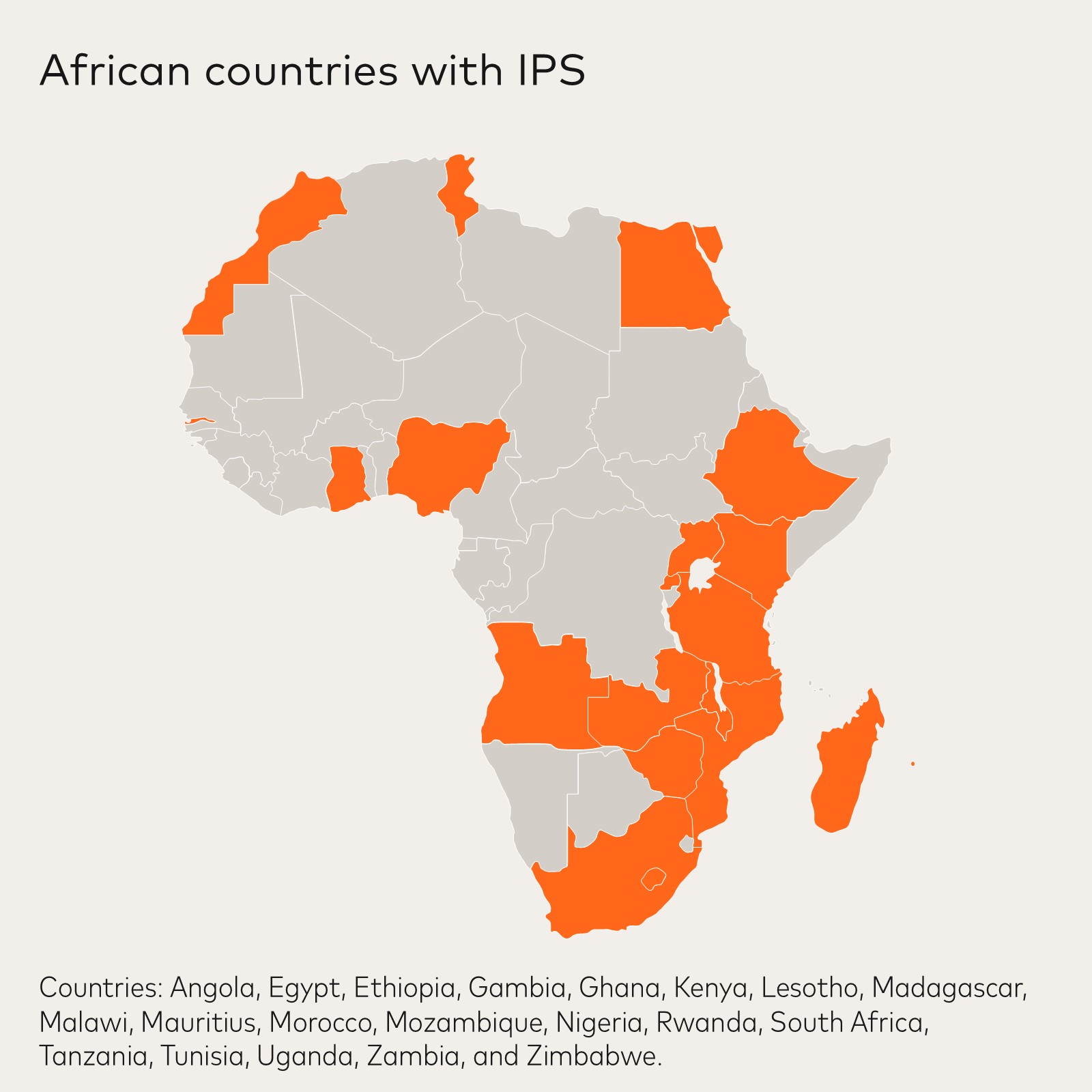Unlocking Africa’s digital future: the rise of real-time payments

Across Africa, real-time payments are transforming how people and businesses move money - faster, safer, and more efficiently than ever before. From e-commerce businesses in South Africa, to fintech start-ups in the commercial hub of Lagos, Nigeria, the continent is undergoing a digital financial revolution.
This blog explores the current landscape, challenges, and opportunities for real-time payments in Africa, and how global lessons can help shape a more inclusive financial future.
The region in numbers:
- According to The State of Inclusive Instant Payments Systems in Africa (SIIPS) 2024 report, 26 of the 54 countries in Africa now have access to a domestic, national-scale instant payment system.

- According the GSMA's The State of the Industry Report on Mobile Money 2025, $1.1 trillion flowed through mobile money accounts across Africa in 2024 and there were 81 billion mobile money transactions.
- According to ACI, real-time payments are projected to contribute more than $15 billion in additional GDP growth to Nigeria and South Africa by 2028.
With mobile penetration on the rise and a growing demand for instant, low-cost transactions, real-time payment systems have the potential to reshape African economies, supercharge innovation, and improve financial inclusion rates.
However, this growth is unlikely to be evenly distributed across the continent as it will be dependent on individual market factors including internet connectivity, regulation, infrastructure capabilities, and consumer confidence.
So how can the continent as a whole best set itself up to maximize the growth opportunity of real-time payments?
Kenya - an exciting trajectory
Kenya launched its real-time payments system – PesaLink – in 2017. PesaLink enables consumers to instantly transfer funds between bank accounts and supports multiple currencies – a significant improvement from the two-day payment cycle that was relied on previously. Since launch, there has been strong uptake of digital payments, but exciting opportunities for further growth remain.
Parts of the Kenyan economy are still reliant on paper-based transactions, which represented 83.8% of the total payments volume in 2023, while real-time payments accounted for just 0.1%. Even with a projected compound annual growth rate (CAGR) of almost 30% from 2023 to 2028, real-time payments will still only account for 0.5% of all transactions in Kenya.
For many Kenyans – particularly those who don’t have access to traditional banking– mobile money presents a practical alternative to real-time payments.
Recognizing barriers is the first step to overcoming them, and this is a key step on the journey to widespread adoption of any real-time system.
Facing challenges, together
To drive meaningful progress, it’s important that as many countries as possible in the African continent have the opportunity to benefit from the growth opportunity real-time payments offer. While each market is unique in its requirements and challenges, there are several common obstacles to overcome, including:
Addressing these challenges will empower more countries in Africa to unlock the many benefits of digitization and real-time payments. Efforts are already underway to explore ways to overcome these challenges, and collaboration is proving key to doing so:
- The Kenyan Banking Association worked with banks and other industry stakeholders to migrate PesaLink from ISO 8583 to ISO 20022 , unlocking new use cases that provide potential for scale, such as Request to Pay, payment initiation, and direct debits.
- Global fintech, Nium, partnered with Ecobank - a pan-African bank – to bring real-time capabilities to 35 African markets. By connecting Nium’s payment rails with Ecobank’s existing SWIFT messaging system, the collaboration has brought real-time payment services to Ecobank’s 32 million customers.
- The importance of interoperability is being increasingly recognized – in Angola, Malawi, and Zimbabwe, and in the CEMAC region, regulators have issued guidance that mandates interoperability between providers. In Ghana, which has multiple instant payment systems, a central platform has been created to ensure cross-border interoperability.
Looking outside the continent
Learning from other regions when it comes to building inclusive, efficient, and secure payment ecosystems can help accelerate modernization efforts across Africa. By applying global lessons, African markets can better navigate challenges and unlock the full potential of real-time payments.In Thailand, for example, the government has played a pivotal role in PromptPay’s popularity. The initial use case was to disburse welfare payments using a proxy, such as a mobile number or citizen ID. This led to increased consumer familiarity with the system, which subsequently promoted repeated usage and helped shift adoption toward merchant payments and other services.
Overlay services are also being widely adopted in other regions – particularly fraud prevention tools – which can help overcome consumer confidence issues and support scaling. Mastercard launched TRACE in the Philippines in early 2025 - the first network-level solution for real-time payment systems developed to proactively identify money mules and trace the dispersion of funds.
Real-time payments are doing more than simply making it easier to pay and get paid. They have the potential to supercharge digital economies across Africa. As additional countries embark on their real-time journeys, looking at and learning from other markets can help to guide success.
As countries overcome hurdles, and adoption and innovation continue to be seen across the continent, real-time payments could become one of Africa’s most powerful tools for sustainable growth and shared prosperity.



